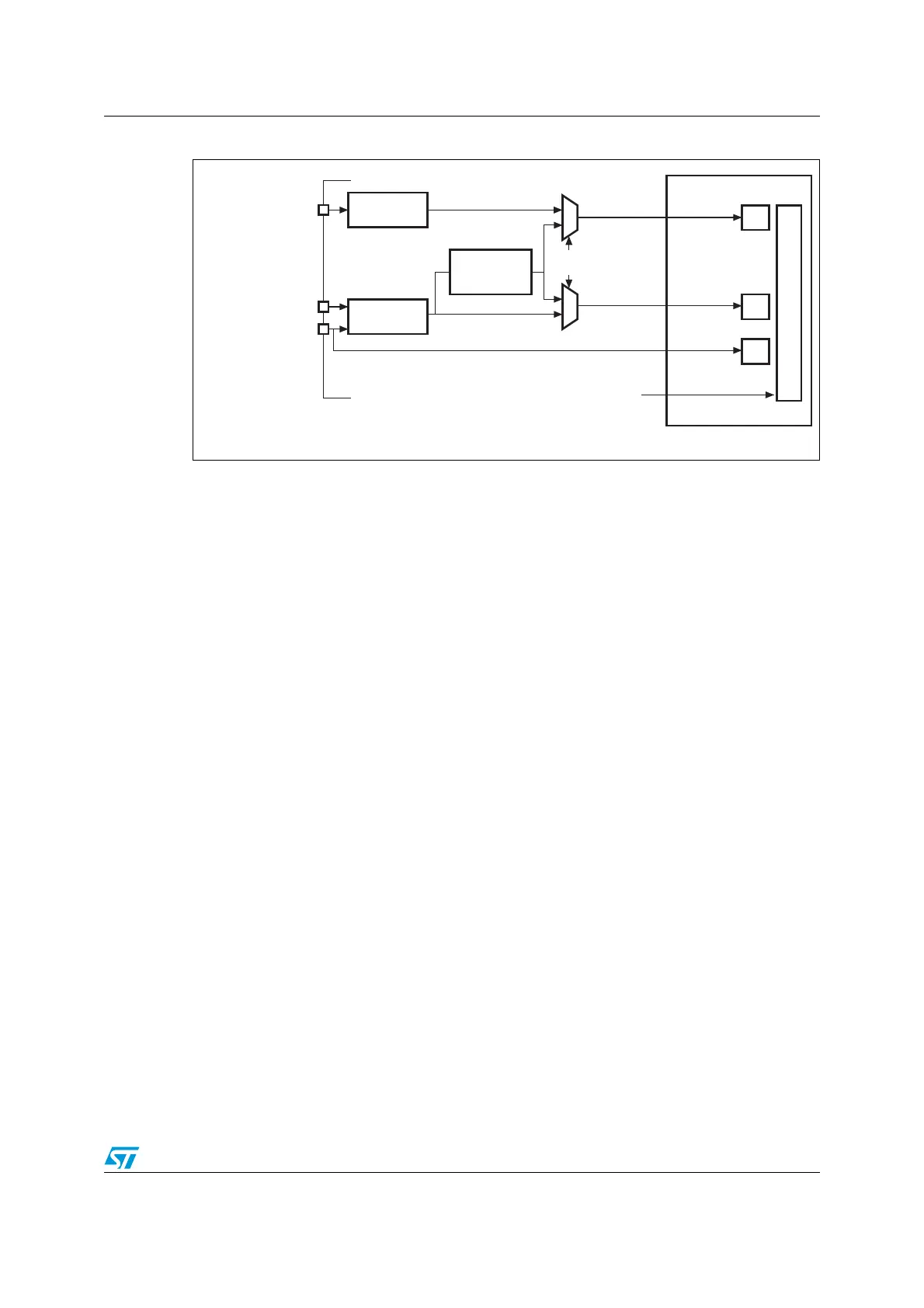RM0090 Ethernet (ETH): media access control (MAC) with DMA controller
Doc ID 018909 Rev 4 914/1422
Figure 329. Clock scheme
1. The MII/RMII selection is controlled through bit 23, MII_RMII_SEL, in the SYSCFG_PMC register.
To save a pin, the two input clock signals, RMII_REF_CK and MII_RX_CLK, are multiplexed
on the same GPIO pin.
29.5 Ethernet functional description: MAC 802.3
The IEEE 802.3 International Standard for local area networks (LANs) employs the
CSMA/CD (carrier sense multiple access with collision detection) as the access method.
The Ethernet peripheral consists of a MAC 802.3 (media access control) controller with
media independent interface (MII) and a dedicated DMA controller.
The MAC block implements the LAN CSMA/CD sublayer for the following families of
systems: 10 Mbit/s and 100 Mbit/s of data rates for baseband and broadband systems. Half-
and full-duplex operation modes are supported. The collision detection access method is
applied only to the half-duplex operation mode. The MAC control frame sublayer is
supported.
The MAC sublayer performs the following functions associated with a data link control
procedure:
● Data encapsulation (transmit and receive)
– Framing (frame boundary delimitation, frame synchronization)
– Addressing (handling of source and destination addresses)
– Error detection
● Media access management
– Medium allocation (collision avoidance)
– Contention resolution (collision handling)
GPIO and AF
controller
GPIO and AF
controller
MII_TX_CLK as AF
(25 MHz or 2.5 MHz)
MII_RX_CLK as AF
(25 MHz or 2.5 MHz)
Sync. divider
/2 for 100 Mb/s
/20 for 10 Mb/s
50 MHz
0
1
0
1
25 MHz or 2.5 MHz
25 MHz or 2.5 MHz
0 MII
1 RMII
(1)
25 MHz
or 2.5 MHz
25 MHz
or 2.5 MHz
MACTXCLK
MACRXCLK
TX
RX
AHB
HCLK
HCLK
MAC
must be greater
than 25 MHz
ai15650
RMII
RMII_REF_CK as AF
(50 MHz)

